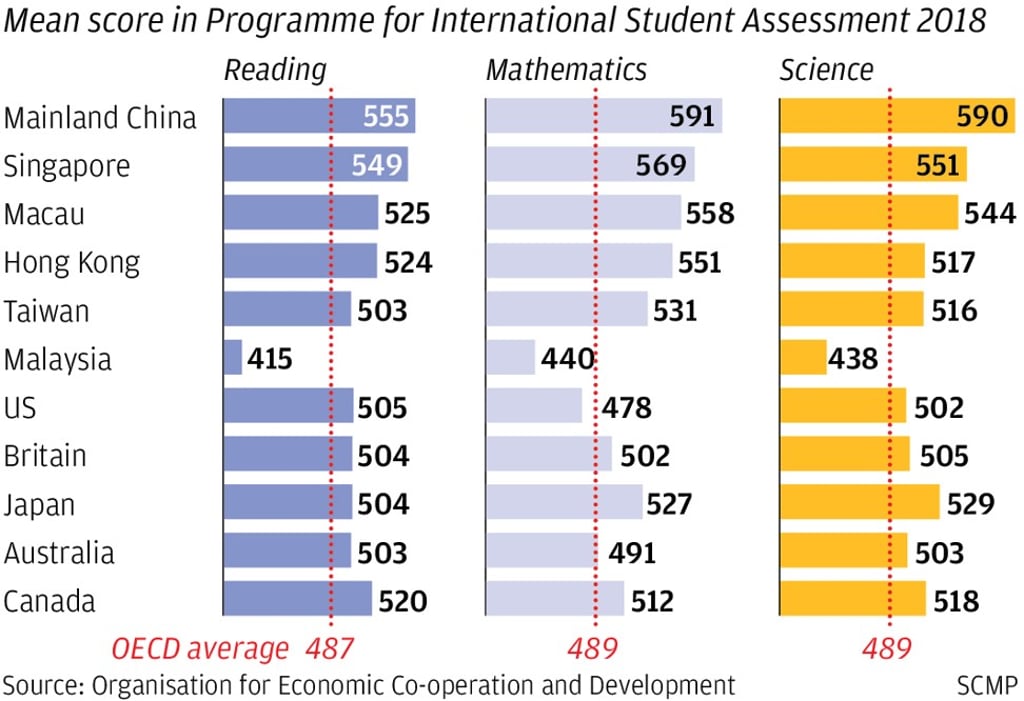Advertisement
Mainland Chinese students best in world as Singapore, Hong Kong slip down rankings
- The results of the latest Programme for International Student Assessment (Pisa) survey were announced on Tuesday
- It found 15-year-olds from Beijing, Shanghai, Jiangsu and Zhejiang outperformed those from 78 other education systems
Reading Time:3 minutes
Why you can trust SCMP

Dewey Simin Beijing
Students from mainland China have edged out those from Singapore to take the top spot in a global benchmarking test, according to results announced on Tuesday.
The latest edition of the Programme for International Student Assessment (Pisa) survey, conducted last year, assessed the performance of 15-year-olds from 79 education systems around the world in science, mathematics and reading.
Students from the four participating cities in mainland China – Beijing, Shanghai, Jiangsu and Zhejiang – came first in all three categories, with 590 points in science, 591 points in mathematics, and 555 points in reading.
Advertisement
Those from the Lion City, meanwhile, scored 551, 569 and 549, respectively, taking second place. In the last survey, conducted in 2015, they came first.
Advertisement
The mean scores for all students that took part in the triennial assessment by the Organisation for Economic Cooperation and Development (OECD) were 489 points in science, 489 in maths and 487 in reading. Between 4,000 and 8,000 students from each education system were assessed.
Advertisement
Select Voice
Choose your listening speed
Get through articles 2x faster
1.25x
250 WPM
Slow
Average
Fast
1.25x
